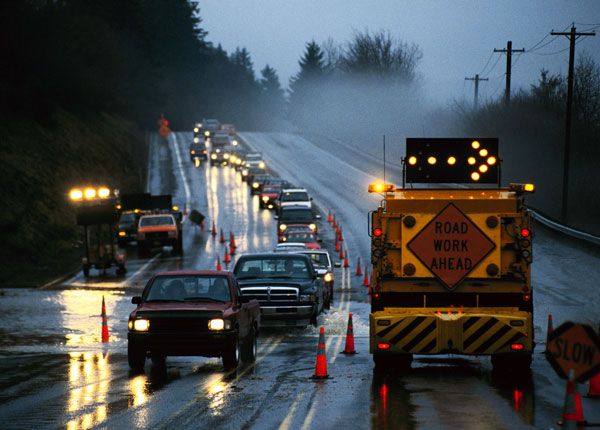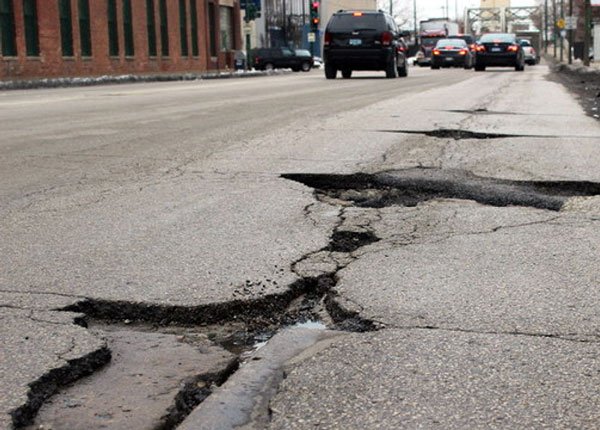
Driving in Complex Environments: Advanced Driving Challenges
Updated Nov. 16, 2020Mastering vehicle control is not the only battle you will face while learning to drive. Becoming a skilled vehicle operator who is proficient in the core driving maneuvers is an important piece of the puzzle, though it is not enough to keep you safe when taking your car out onto public roadways. Every time you sit in the driver’s seat, turn the key in the ignition and set off on a journey – you are putting yourself at risk.
Student drivers must learn to adjust their driving behavior and new-found vehicle control skills to suit different driving environments and mitigate the risks which accompany them. The type and level of danger you are exposed to while driving can change dozens of times over in a single, short journey.
Consider how many different types of roads you will encounter when driving to school or work. Are you likely to use quiet, rural roads, congested city streets or fast-paced highways? Perhaps, all the above? Learning about different types of roads and the risks you may be exposed to while using them is an essential part of your driver’s education. Armed with this knowledge, you can alter your driving behavior to minimize your chances of being involved in an accident or collision.
The materials that follow this introduction will explore the risks associated with different types of road and teach you how to manage them. We also discuss other factors that influence the level of danger you are exposed to while driving, such as hills, curved roadways, heavy traffic and highway work zones.
Check out the section summaries below to find out what’s in store. We recommend working through each block of materials in turn to make sure everything has been covered. However, you may jump ahead to a specific section if you need information on that particular topic right away.
City driving
What kind of dangers will you face when driving in a city? A typical inner-city driving environment could involve:
- Multiple lanes of traffic
- Regular, complex intersections
- Many different signs, signals, pavement markings and traffic control devices
- Many different types of road users, such as pedestrians, cyclists, delivery vehicles, public transport vehicles and other motorists
- A mixture of one-way and two-way streets
- Road work sites
- Distracting sights and sounds
As you can see, there are a lot of variables to consider. Urban driving is further complicated by the fact that city streets range from moderately busy to heavily congested – depending on the time of day. These issues are explored in the “City Driving” section, along with everything you must know to avoid conflict and stay safe on city streets. The dangers of driving in heavy traffic are covered in more detail later.
Residential driving
Most drivers feel completely at ease when driving on residential streets near their homes. It is essential to remember that you are still at risk, even in this familiar environment. In fact, national data shows that the risk of being involved in an accident or collision close to home is considerable – learn more about this in “Driving in Residential Neighborhoods”.
On the face of things, residential driving environments are relatively low-risk when compared to other situations. Of course, you will need to watch out for parked vehicles, pedestrians, view obstructions and other hazards. Though the real danger of driving in a residential area is that the familiarity of the situation leads many a driver to take their eye off the ball. We introduce the importance of remaining alert, understanding special-use residential lanes and parking risks in this section of your driver's ed program.
Rural roads
Do not make the mistake of assuming the low-volume of traffic on rural roads equates to a lower-risk. While it is true that you are less likely to encounter other motorists, intersections, distractions and many other risk-heightening factors on a rural roadway, there are still dangers to consider.
As with residential roads, the relative peace that drivers experience on rural roads can lead to complacency. Plus, you are more likely to encounter poor-quality road surfaces, farm vehicles, hidden driveways and animals on the roadway in a rural environment than you are anywhere else. Learn how to drive safely on rural roads, in “Risks on Rural Roads” and “Approaches to Rural Driving”.
Curved roads and hills
Curved roadways and hills can add additional risks to any type of road – though you will most frequently encounter them in residential and rural areas. The dangers created by curves and hills are two-fold:
- Your ability to see oncoming vehicles and other hazards may be impeded by the curve or hill.
- When driving on a hill or around a curved road, additional forces will be acting on your vehicle – which you will need to counteract.
Motorists must also consider how these factors may affect other vehicles using the roadway. For instance, very steep downhill slopes can cause very large or heavy trucks to lose braking ability and accelerate out of control.
Learning how to adjust your speed and lane position when driving over hills or through curves is an incredibly important aspect of your driver’s training. Get acquainted with these issues here, in “Driving Through Curves” and “Driving Through Hills.” The complex risks associated with mountain driving are also discussed in this section.
Heavy traffic
This block fully explores the risks associated with heavy traffic that we touched upon in the “City Driving” section. Congestion can occur on pretty much any roadway if an incident or some other situation restricts the flow of traffic. Though as you may expect, drivers are most likely to encounter heavy traffic in urban areas and on highways – which are discussed in the next section.
One of the biggest problems with driving in a heavy traffic environment, is that you will struggle to maintain any empty space around your vehicle. Less space means an increased chance of conflict between drivers and less time to react if something goes wrong. Your ability to take evasive action will also be severely limited by lack of space when driving in heavy traffic. Being extremely vigilant and driving defensively are the main tactics you must use to counteract these risks. While working through the “Heavy Traffic” section, you will learn about heavy traffic at intersections, multi-lane roadways and executing turns amid multiple lanes of traffic.
Driving on highways
America’s fastest and most well-traveled roads are covered in this section. It is quite common for new drivers to feel nervous about driving on high-speed freeways, so you may be pleased to find out that these are some of the safest roads in the country! Major highways are built to facilitate easy travel between every major city, in every state. They are, by design, extremely convenient and safe – when used responsibly.
This detailed section of the program covers various topics, which include:
- Safe highway driving approaches
- How highways work
- Highway interchanges
- Entering and exiting a highway
- Choosing the correct lane on a highway
- Highway safety features
By the end of this section, you will have learned how to identify and avoid potential dangers while using a limited-access highway. There are still a few special highway considerations to discuss, which are covered in the next section.
Special highway considerations
Highway safety is not just about the actions you take while traveling on a highway; it can also be influenced by the choices you make before setting off on your journey. When it comes to driving long distances on high-speed roads, preparation is the secret to a safe and uneventful trip. The reasons why you must map-out your journey and the steps you should take to ensure your vehicle is up to the task, are covered in “Highway Driving Safety”.
While highway driving is generally quite safe, accidents and emergencies do happen. The high-speed nature of these roads means that you will have little time to react, should you encounter a dangerous situation. If you keep a cool head, there is nearly always something that can be done to minimize the severity of an accident or avoid one altogether. The information you need to avoid highway emergencies and a breakdown of essential highway driving safety practices are also contained in this module.
Work zones
The presence of maintenance, construction or utility work sites on any roadway will considerably heighten the risk linked to that environment. The risks posed by such work zones are not straight-forward or easy to pin down, as the types of work zone you may encounter vary dramatically. We discuss different types of work zones and their associated dangers in this final section.
One thing is certain about roadway work zones around the United States: better driver awareness is required. The lane closures, roadway obstructions and changes to speed limits and road rules which often accompany these areas can take motorists by surprise. Accidents, injuries and fatalities around work zones are common.
Avoiding danger on the road
A great deal of valuable safety information is covered throughout this section. Whether you pick out the materials you most need at this time or work through each section in turn, it is essential that you read through everything and go through the official DMV manual as well. While avoiding danger in different driving environments is a complex issue, certain key safety rules apply across the board:
- 1

Keep to a safe and appropriate speed.
- 2

Stay alert.
- 3

Maintain as much space on all sides of your vehicle as possible.
- 4

Scan the roadway ahead for potential problems.
- 5

Drive defensively, at all times.
Let’s talk about risk in driving environments in a little more detail.




